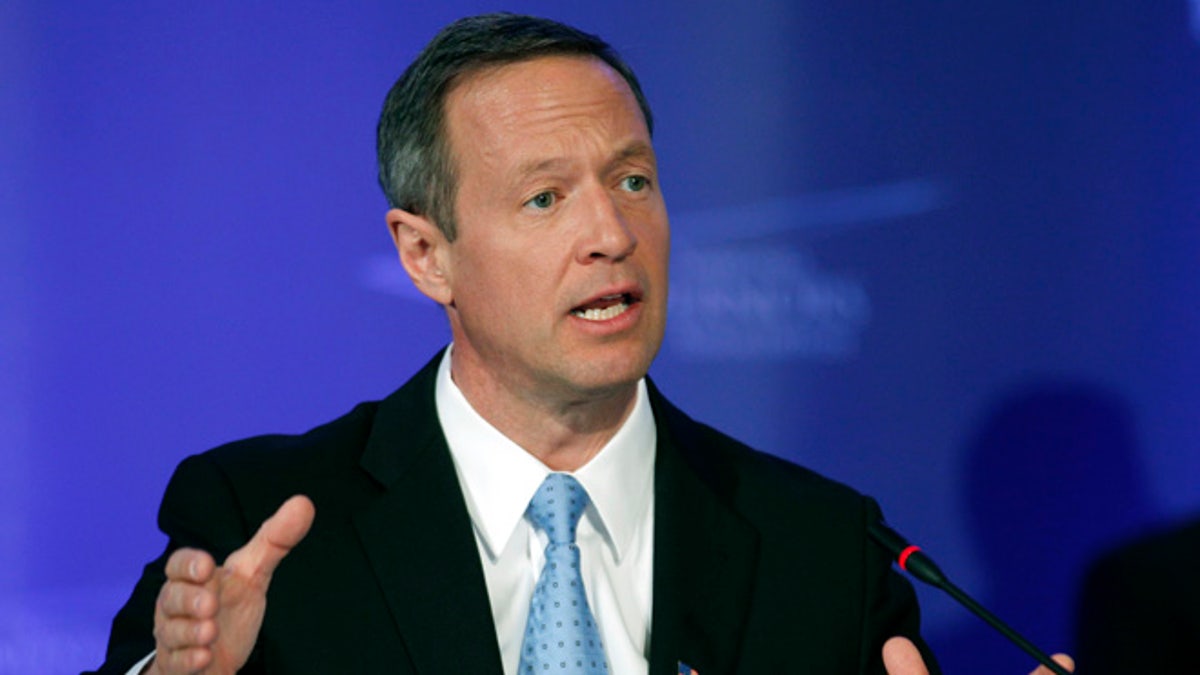
Shown here is Maryland Gov. Martin O'Malley. (AP)
A group of Maryland residents frustrated with its state’s liberal government is joining a recent movement across the country of regions trying to secede.
Western Maryland is made up of five counties whose residents largely vote Republican and feel under-represented at the state capitol, run by Democratic Gov. Martin O’Malley and a Democrat-controlled legislature.
The movement began in July as a social-media effort, with activist Scott Strzelczyk starting a Facebook page titled the Western Maryland Initiative.
The movement, however, has since garnered significant media attention, with Strzelczyk talking to everybody from National Public Radio to The Washington Post.
“We are tired of this,” he said during an interview Thursday with Washington-area NPR affiliate WAMU. “We have had enough.”
Strzelczyk said the biggest concerns are increasing taxes, and the Democrat-controlled legislature gerrymander voting district so that the state’s big metropolitan areas have the most representation and tighter gun laws enacted this year, which he calls “the last straw.”
The movement is just one of several across the country that includes the Upper Peninsula in Michigan, Northern California and several conservative northern Colorado counties.
The Colorado effort is backed by the Tea Party movement and has gotten the issue put on the November ballot as a non-binding referendum. The movement was also driven in large part by state lawmakers passing tighter gun-control legislation this year that was signed by Democratic Gov. John Hickenlooper.
Todd Eberly, a political science professor at St. Mary’s College of Maryland, argues the movement goes beyond disgruntled conservatives, pointing out Democrats in South Florida and western Arizona counties want to break from their states, which they consider run by Republicans.
“This is about folks who just do not believe they are being represented, whether it's Democrats and Republicans,” he told WAMU.
Still, secession will not be easy, for a variety of reasons, including that many of these remote, rural regions rely on money generated in their state’s more commercial and populated cities. And secession leaders would need state and federal approval, which seems unlikely considering the last time a region broke off was 1863, when 50 western Virginia counties split to form West Virginia.
Strzelczyk acknowledges he is helping lead a longshot effort but says the movement will go forward with such efforts as starting policy committees, reaching out to lawmakers and forming a nonprofit 501 (c) (4) group that is allowed to engage in political activities.
“This is about popular support,” he said. “Ultimately, if the people of these five western counties do not support this effort, we’re not going to force them to leave.”




